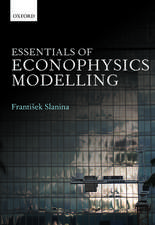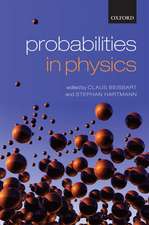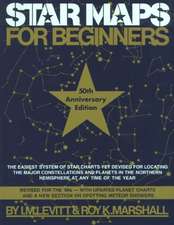Inverse Problems in Quantum Scattering Theory: Theoretical and Mathematical Physics
Cuvânt înainte de R.G. Newton Autor Khosrow Chadan, Pierre C. Sabatieren Limba Engleză Paperback – 8 dec 2011
Din seria Theoretical and Mathematical Physics
- 20%
 Preț: 697.22 lei
Preț: 697.22 lei - 18%
 Preț: 744.84 lei
Preț: 744.84 lei - 20%
 Preț: 699.50 lei
Preț: 699.50 lei -
 Preț: 396.82 lei
Preț: 396.82 lei - 15%
 Preț: 721.06 lei
Preț: 721.06 lei - 18%
 Preț: 1120.68 lei
Preț: 1120.68 lei -
 Preț: 398.35 lei
Preț: 398.35 lei - 15%
 Preț: 643.65 lei
Preț: 643.65 lei - 15%
 Preț: 508.60 lei
Preț: 508.60 lei - 20%
 Preț: 652.54 lei
Preț: 652.54 lei - 15%
 Preț: 646.75 lei
Preț: 646.75 lei - 15%
 Preț: 654.12 lei
Preț: 654.12 lei - 15%
 Preț: 649.87 lei
Preț: 649.87 lei -
 Preț: 396.24 lei
Preț: 396.24 lei - 15%
 Preț: 653.14 lei
Preț: 653.14 lei - 18%
 Preț: 960.78 lei
Preț: 960.78 lei - 15%
 Preț: 529.92 lei
Preț: 529.92 lei - 18%
 Preț: 1127.78 lei
Preț: 1127.78 lei - 18%
 Preț: 1548.71 lei
Preț: 1548.71 lei - 15%
 Preț: 551.53 lei
Preț: 551.53 lei - 18%
 Preț: 1002.75 lei
Preț: 1002.75 lei -
 Preț: 396.02 lei
Preț: 396.02 lei - 15%
 Preț: 648.89 lei
Preț: 648.89 lei - 18%
 Preț: 783.35 lei
Preț: 783.35 lei - 18%
 Preț: 973.38 lei
Preț: 973.38 lei - 18%
 Preț: 907.90 lei
Preț: 907.90 lei - 15%
 Preț: 655.78 lei
Preț: 655.78 lei - 18%
 Preț: 1118.93 lei
Preț: 1118.93 lei -
 Preț: 390.25 lei
Preț: 390.25 lei - 15%
 Preț: 663.79 lei
Preț: 663.79 lei - 15%
 Preț: 653.79 lei
Preț: 653.79 lei - 15%
 Preț: 645.28 lei
Preț: 645.28 lei - 15%
 Preț: 604.23 lei
Preț: 604.23 lei - 15%
 Preț: 639.25 lei
Preț: 639.25 lei - 15%
 Preț: 590.81 lei
Preț: 590.81 lei -
 Preț: 395.25 lei
Preț: 395.25 lei - 15%
 Preț: 589.33 lei
Preț: 589.33 lei - 19%
 Preț: 543.19 lei
Preț: 543.19 lei - 15%
 Preț: 594.24 lei
Preț: 594.24 lei - 18%
 Preț: 911.17 lei
Preț: 911.17 lei - 18%
 Preț: 957.75 lei
Preț: 957.75 lei -
 Preț: 409.13 lei
Preț: 409.13 lei - 15%
 Preț: 532.23 lei
Preț: 532.23 lei
Preț: 402.00 lei
Nou
Puncte Express: 603
Preț estimativ în valută:
76.93€ • 83.54$ • 64.62£
76.93€ • 83.54$ • 64.62£
Carte tipărită la comandă
Livrare economică 23 aprilie-07 mai
Preluare comenzi: 021 569.72.76
Specificații
ISBN-13: 9783642833199
ISBN-10: 3642833195
Pagini: 536
Ilustrații: XXXI, 499 p.
Dimensiuni: 155 x 235 x 28 mm
Greutate: 0.74 kg
Ediția:2nd ed. 1989. Softcover reprint of the original 2nd ed. 1989
Editura: Springer Berlin, Heidelberg
Colecția Springer
Seria Theoretical and Mathematical Physics
Locul publicării:Berlin, Heidelberg, Germany
ISBN-10: 3642833195
Pagini: 536
Ilustrații: XXXI, 499 p.
Dimensiuni: 155 x 235 x 28 mm
Greutate: 0.74 kg
Ediția:2nd ed. 1989. Softcover reprint of the original 2nd ed. 1989
Editura: Springer Berlin, Heidelberg
Colecția Springer
Seria Theoretical and Mathematical Physics
Locul publicării:Berlin, Heidelberg, Germany
Public țintă
ResearchCuprins
I Some Results from Scattering Theory.- I.1 The Reduced Radial Schrödinger Equation.- I.2 The Regular Solution: S-Wave (l = 0).- I.3 The Jost Solution: S-Wave (l = 0).- I.4 The Jost Function and the Phase Shift.- I.5 Higher Waves.- I.6 Singular Potentials.- I.7 Comments and References.- II Bound States—Eigenfunction Expansions.- II.1 Bound States: The Levinson Theorem.- II.2 Integral Representation for the Jost Function.- II.3 Eigenfunction Expansion.- II.4 Miscellaneous Results.- II.5 Singular Potentials.- II.6 Comments and References.- III The Gel’fand-Levitan-Jost-Kohn Method.- III.1 The Povzner-Levitan Representation.- III.2 The Gel’fand-Levitan Integral Equation.- III.3 Krein’s Equation.- III.4 Higher Waves.- III.5 More General Equations.- III.6 Concluding Summary of the Method.- III.7 Comments and References.- IV Applications of the Gel’fand-Levitan Equation.- IV.1 Introduction of New Bound States.- IV.2 Phase Equivalent Potentials.- IV.3 Bargmann Potentials.- IV.4 Transformations of the Schrödinger Equation.- IV.5 Comments and References.- V The Marchenko Method.- V.1 The Levin Representation.- V.2 The Marchenko Integral Equation.- V.3 Comments and References.- VI Examples.- VI.1 Bargmann Potentials.- VI.2 Singular Potentials.- VI.3 Comments and References.- VII Special Classes of Potentials.- VII.1 Yukawa Potentials and the Direct Problem.- VII.2 Yukawa Potentials and the Inverse Problem.- VII.3 Higher Waves—Coulomb Potential.- VII.4 Holomorphic Potentials.- VII.5 Comments and References.- VIII Nonlocal Separable Interactions.- VIII.1 The Direct Problem.- VIII.2 The Inverse Problem.- VIII.3 More General Interactions.- VIII.4 Applications.- VIII.5 Comments and References.- IX Miscellaneous Approaches to the Inverse Problems at Fixed l.- IX.1Generalization to Other Central Potentials.- IX.2 Krein’s Approach.- IX.3 Systems of Equations.- IX.4 Coupled Channels.- IX.5 Relativistic Problems.- IX.6 Discrete Forms of the Methods.- IX.7 Dispersion Relation Approach.- IX.8 Energy Dependent Potentials.- IX.9 Miscellaneous Results.- X Scattering Amplitudes from Elastic Cross Sections.- X.1 Introduction.- X.2 Constructive Methods.- X.3 Other Uniqueness Studies.- X.4 Local Results.- X.5 Uniqueness and Stability: A Reassessment.- X.6 Generalizations.- X.7 Comments and References.- XI Potentials from the Scattering Amplitude at Fixed Energy: General Equation and Mathematical Tools.- XI.1 Introduction.- XI.2 The Transformation Kernel.- XI.3 The Symmetric Kernel and the Integral Equation.- XI.4 The General Machinery.- XI.5 Further Study of the Integral Equation.- XI.6 Remarks on This Chapter.- XI.7 Connection Between the Problem at Fixed E and the Problem at Fixed l.- XII Potentials from the Scattering Amplitude at Fixed Energy: Matrix Methods.- XII.1 Introduction.- XII.2 A Method in Which the Index ? Runs Through Integers.- XII.3 Inversion of the Matrix M and Other Properties.- XII.4 Construction of cl from tan ?l.- XII.5 Construction of V(r)—Consistency of the Method.- XII.6 Generalized Matrix Methods.- XII.7 Miscellaneous Results.- XII.8 Interpolation Properties.- XII.9 Limitation of the Matrix Methods.- XIII Potentials from the Scattering Amplitude at Fixed Energy: Operator Methods.- XIII.1 Introduction.- XIII.2 Method for Potentials of the Yukawa Class.- XIII.3 Methods Using the Spectrum of the Schrödinger Operator.- XIII.4 Complete Solution.- XIII.5 Remarks on the Methods.- XIV The Three-Dimensional Inverse Problem.- XIV.1 Introduction.- XIV.2 New Outline of One-Dimensional Methods.- XIV. 3 Approach of theThree-Dimensional Problem Based on Faddeev’s Green’s Function.- XIV.4 Consistency and ?-Approaches.- XIV.5 Other Approaches in the Frequency Domain.- XIV.6 Time-Domain Inverse Scattering Theory.- XIV.7 Comments and References.- XV Miscellaneous Approaches to Inverse Problems at Fixed Energy.- XV.1 Methods Using Interpolation Properties.- XV.2 Methods Using Generalized Translation Operators.- XV.3 Remark on the Results Given in This Chapter.- XVI Approximate Methods.- XVI.1 Introduction.- XVI.2 Born Approximation.- XVI.3 The Semiclassical Approximation I.- XVI.4 Semiclassical Analysis II.- XVI.5 Semiclassical Analysis III.- XVI.6 From Approximate to Exact Methods.- XVI.7 Semiclassical Studies in Other Fields.- XVII Inverse Problems in One Dimension.- XVII.1 Introduction.- XVII.2 The Inverse Problem: Approaches Related with a Marchenko Equation.- XVII.3 The Inverse Problem: Other Approaches.- XVII.4 More General One-Dimensional Problems.- XVII.5 Comments and References.- XVII.A Appendix (Exercises for Readers).- XVIII Problems Connected with Discrete Spectra.- XVIII. 1 Introduction.- XVIII.2 Relations with Other Problems and Extensions.- XVIII.3 Inverse Problem in the Coupling Constant.- XVIII.4 Comments and References.- XIX Numerical Problem.- XIX.1 Introduction.- XIX.2 Numerical Methods for Local Potentials.- XIX.3 Numerical Methods for Inverse Spectral Problems.- XIX.4 Nonlocal Potentials.- Reference List.














